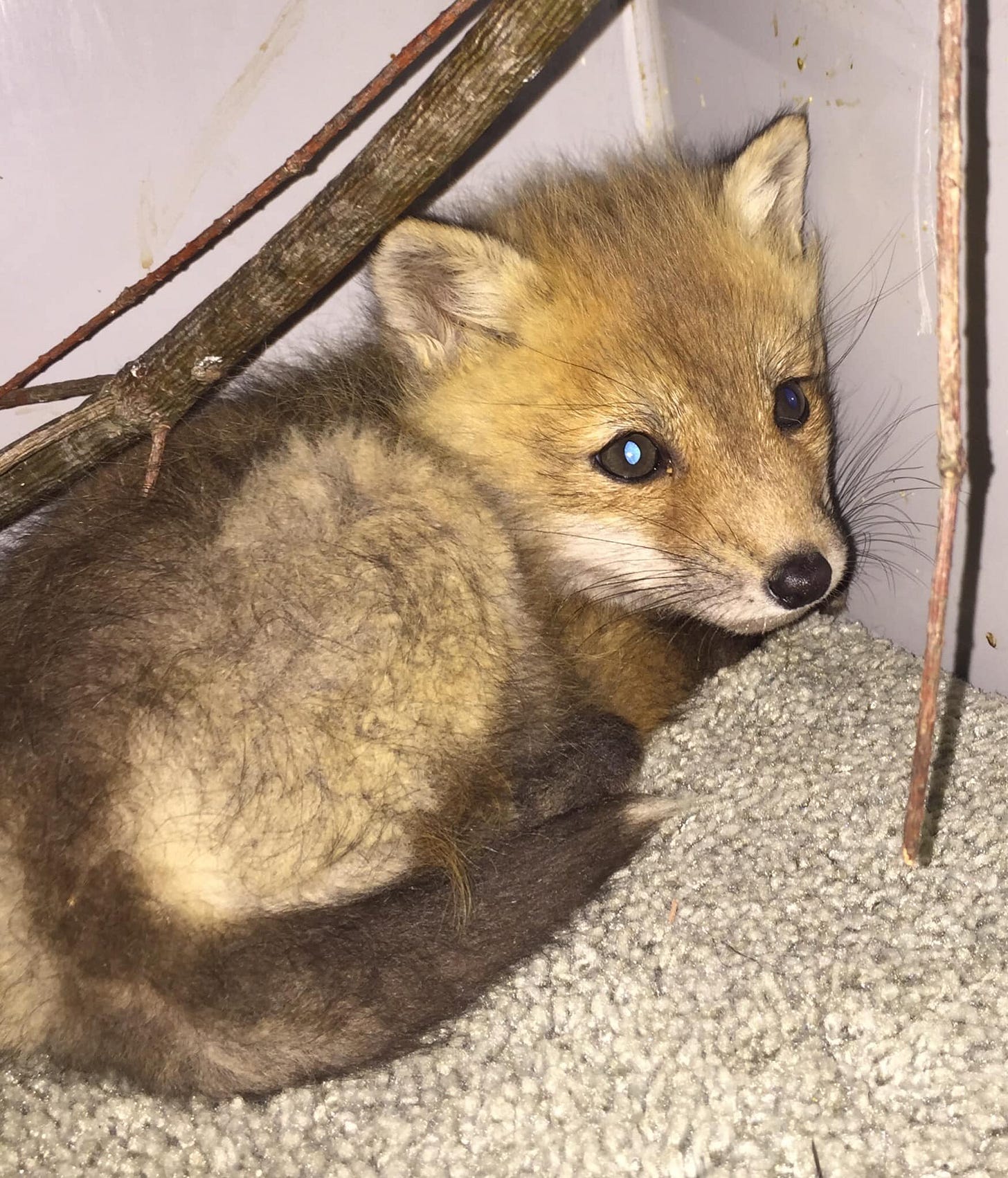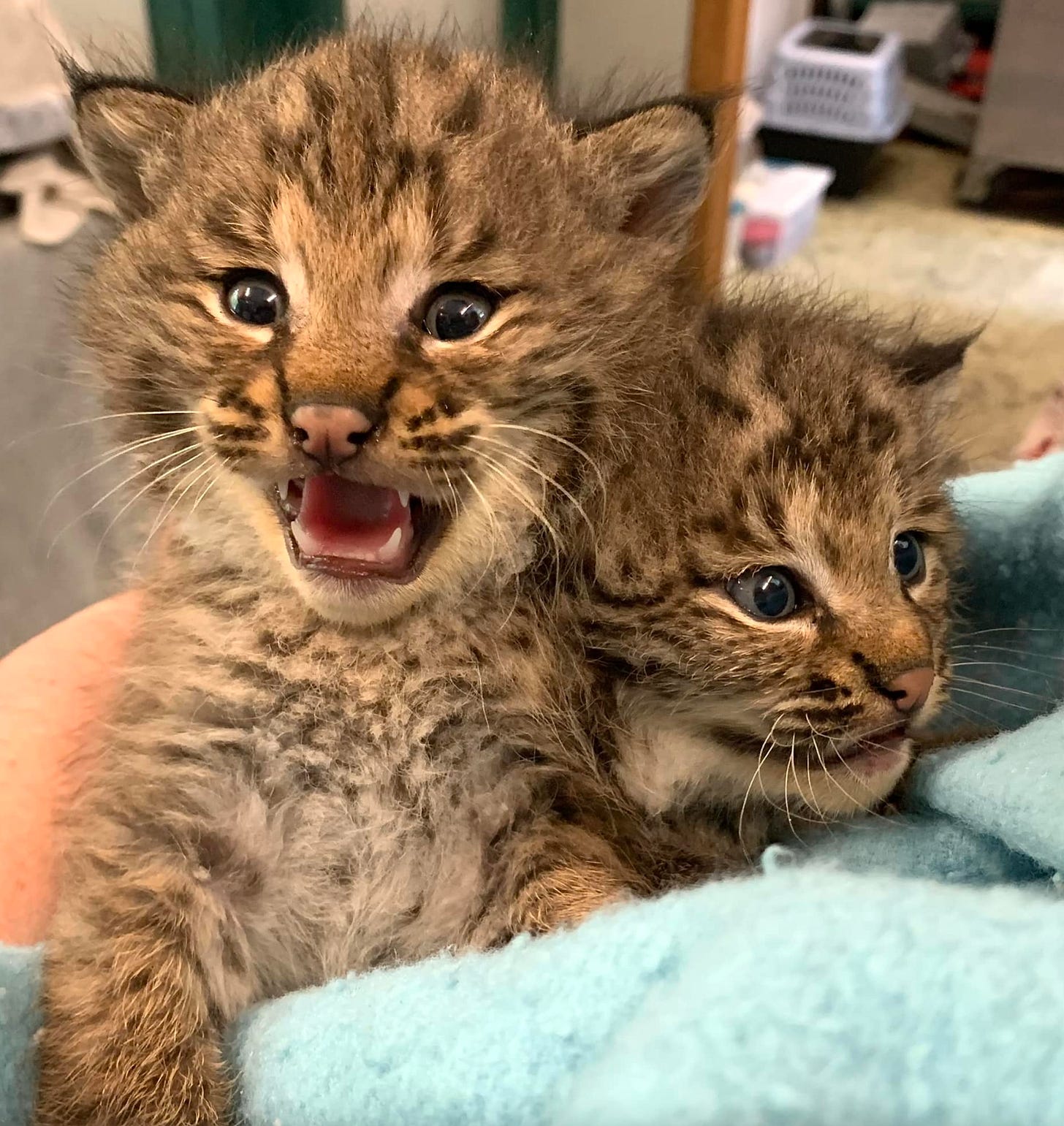Superhero Passes The Wildlife Cape To Son
Acadia Wildlife's Ann Rivers and Tony Mullane's Teaming Up To Keep Saving Animals
BAR HARBOR—Ann Rivers has spent a lifetime making sure wild animals can be healthy and free. She’s nursed baby bobcats, repaired bat extremities, handled eagle talon injuries, and dealt with traumatic brain injuries in too many species to mention.
She has done it all, deep in the Bar Harbor woods with a few volunteers, while fielding thousands of phone calls every year, trying to raise money to keep the nonprofit Acadia Wildlife Center open, trying to raise awareness about human and animal interactions, and while also keeping up to date on all the federal and state permits she needs to do her good work. For more than 27 years, Ann has all that—and then some—tirelessly, brilliantly, and with exquisite skill and kindness.
Now, things are changing. She’s passing her title of chief executive officer and that part of the workload to Tony Mullane, her son. Tony grew up on MDI riding in a car with wounded animals, helping his mom build the center, piece by piece, building by building, hope by hope, donation by donation.
Ann will continue as medical director while Tony fundraises, manages, educates, and coordinates staff and volunteers.
TONY MULLANE

Tony’s hand pressed flat against the wire of the fox enclosure this Tuesday, his voice mellowing out into the wooden building. “Hey buddy, you want to come up and say hi?”
From below came a chittering noise, and a scratching.
“Hey, buddy,” Tony repeated.
A few seconds later, Jax appeared, standing on an elevated perch, talking a mile a minute. A rope toy hung by his head. He scampered about, still talking. Tony would respond. Jax would talk again.
“I’m so excited to see you, too,” Tony said, smiling.
Jax came to Ann at ten weeks old because of a traumatic brain injury. He survived. He thrived physically, but he was tame—too tame for the outside world.
“He has lost all his wild,” Tony said as Jax was in the process of losing—or at least hiding—all of his mice. “Whatcha doing, buddy?”
Living. Thriving. Educating. Jax was doing all those things, plus hiding some mice. Jax isn’t the only animal that is currently housed at the center and used for education because they couldn’t be released. There’s also Logan, the eagle; Chloe, the turkey vulture; an owl; a turtle; Spike, the porcupine; and Sebastian, the baby skunk.
Logan arrived a year ago and he’s about four now. He had a territorial fight and a talon entered his brain just by his ear. As a result, he can’t move his eyes correctly. That makes it hard for him to hunt and fly. So, now, he is used to educate and he fosters the other injured eagles.
“He’s done an amazing job,” Tony said.
A fledging eagle he just recently fostered was released in early November. “We’re proud of him,” Tony said.
There’s a lot to be proud of at the center.
“It’s been my mom alone working, wearing ten hats that’s made this possible,” Tony said. He’s been board chair for the past five years and he’s been signing up for every webinar he can, reading every book, learning as much as possible so that he can shepherd the center as its new CEO. And the more he learns? The more he appreciates all that Ann does and did.
“I’ve always been so impressed by Mom, just so much. But now,” he said while standing outside an enclosure that houses the turkey vulture, “now? It’s just so much more. I’m impressed more and more.”
Like Ann, Tony has to have a passion in life and has a great ability to self educate and problem solve. He’s been a filmmaker, a long-distance hiker, a business owner, and worked at the MDI Bio Lab. With the center, he returns to his roots.
“I’m going to see what I can do here,” he said of the center, but it’s really what he’s going to see what he can do for here. With his mom. With the volunteers. With the donors. With the animals.
“We make a great team,” Tony said as he walked the land in shorts, despite the chilly weather. “We do a little good in the world here.”
That’s what matters.
ANN RIVERS

She is a woman who calls skunks superhero animals. She calls porcupines that too, but for many who know her, it’s Ann that’s the superhero, spending her life, energy, and intellect saving those that can be saved.
Ann has spent 27 years rehabilitating animals on this island and years and years of educating people about them, too.
She has seen it all. Almost.
This week a short-eared owl appeared, riding in on a ferry from Cranberry Island. These owls are threatened in Maine and Ann had never worked on one before. It came in in critical condition and didn’t make it. That’s part of the stress and the pain and reality of the work.
Each year she’s fielded thousands of calls from people worried and concerned about wild animals. Every day there are up to 100 animals living in the center’s spaces.
Back in 2000, Anne told me, “I do it because I love animals. It’s really a community service. Most people just presume that it’s being supported by the park or Fish and Wildlife.”
It wasn’t. Twenty-three years later, it still needs support.
Tony is hoping that getting more help from the community will allow them to do more rescues, more rehabilitation, and add staff and expand the property.
“Those generous people are how we keep going,” he said of past and current donors and volunteers.
Sixty percent of the animals they see, he said, are released into the world again, which is an incredibly high success rate. Others are euthanized almost immediately because there is no hope. Some animals stay months before being well enough to go back into the world. Some, like Jax, would never make it out there. They stay.
The community has helped make that happen, Tony stressed. In 2018, the community raised $4,602 in a GoFundMe page to create a bat habitat. The center is one of just two sites in the state that rehabilitates bats. It is Maine’s first bat flyaway.
Over the years, the 10-by-10 cabin and bunny hutch on the 15 private acres in Bar Harbor has expanded to not just include the bat habitat. The small original room where Ann did her medical work has been abandoned and now she works in a 1,100-square clinic and nature center. Outdoor enclosures help different animals recover from their ailments. The eagles have a flight pen. The loon has a water cage. The skunks have a bunch of tunnels to play in.
Ann and Tony built much of the center together, putting up each piece of plywood, the flooring, nailing each nail, screwing each screw.
Acadia Wildlife Center began in 1994 thanks to Coleen Doucette. Coleen and Anne were neighbors, and Coleen transferred the center to Ann after leaving to help wildlife at Tri-State Bird Rescue in Delaware. Rivers is a master birder and massively credentialed and certified to deal with mammals, birds, and reptiles, so many different species and animals. According to its website, “85% of wildlife patients nationwide are injured or orphaned as the result of human or domestic pet interactions.”
The releases, though, like the one with the eagle that Logan fostered, that’s what makes the work sing.
“That’s what it’s all about,” Tony said. “There’s this beautiful animal, this amazing animal, and it’s free.”
That, much like Acadia Wildlife Center and its people and supporters, is something to be thankful for.

LINKS TO LEARN MORE
Acadia Wildlife can be reached at (207) 288-4960 from 9 a.m. to 4 p.m. according to its website, 9 to 5 according to its sign.
To donate click here.
How to tell if an animal needs help.
Acadia Wildlife’s Facebook page.
Dick Broom’s article in the Islander about Acadia Wildlife.













Sadly there is no Social Security or Medicare in the animal world and suffering is all too often the plight of wild animals. People like Anne Rivers and her son have made a huge difference but they depend upon the generosity of us to help pay the bills. Make a suffering animal's life better...Donate!